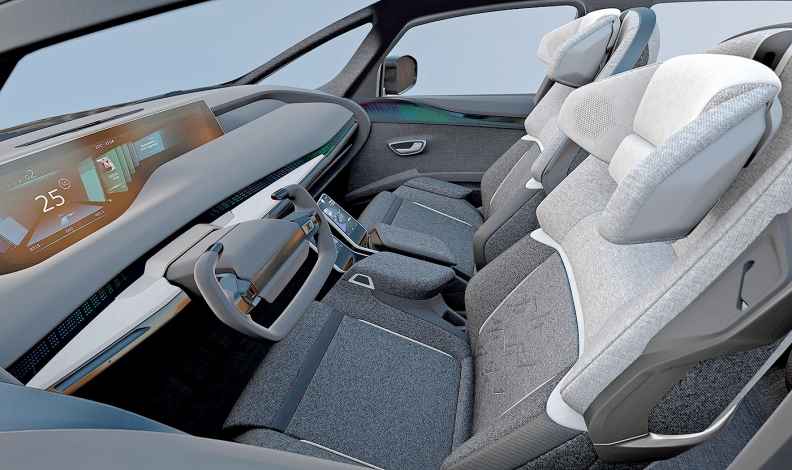LAS VEGAS — The elements of a self-driving car's cockpit — seats, dashboard, steering wheel, controls and airbags — are emerging piece by piece, like a giant jigsaw puzzle.

Forget about Disney's Tomorrowland. At CES, suppliers pitched technology to automakers, and they are starting to win contracts.
One of those suppliers — French seat-maker Faurecia — showcased a modified Renault Espace minivan with a four-seat interior. The retractable steering wheel, sliding seats and video screen were suitable for a vehicle that drives itself for long stretches on the highway.
The modified Espace is just a design exercise, but individual components will be available before fully self-driving vehicles roam the highways.
For example, Faurecia showcased a revolving seat that also retracts to a prone position. The ZF-designed safety harness is anchored to the seat, and the seat back automatically returns to an upright position before a crash.
The seat is production-ready, and Faurecia is pitching it to potential customers. The instrument panel also is suitable for production — once regulators OK it.
When the motorist is driving, a screen atop the dashboard displays a conventional instrument cluster. When the car switches to autonomous mode, the screen expands and slides to the middle of the dashboard, where it displays videos to the passengers.
Yet another marketable technology is the Espace's audio cocoon, which allows one passenger to listen to music undisturbed while another takes a call.
The Espace also featured a digital assistant — Amazon Alexa — allowing passengers access to their music, phone lists, calendars and other personal data. That, too, is a feature Faurecia is marketing to customers.
One of Faurecia's contract wins was on display at CES.
Chinese EV startup Byton rolled out a concept for an electric crossover that will enter production in 2019. Faurecia produced the rotating seat, instrument panel, door panel and interior.
"We are very happy to work with them," said David Degrange, Faurecia's vice president of cockpits. "We have the capacity to integrate these technologies for the customer. We think it would be a good benefit."
Faurecia also has held discussions with Uber and Didi Chuxing, China's largest ride-hailing service.
Degrange does not expect Uber or Didi to order interiors directly from suppliers. But he does expect them to ask automakers to produce vehicles more suitable for ride-hailing fleets.
And that wish list is likely to include, among other things, more luxurious accommodations for rear passengers. Faurecia intends to be ready.
"We have talked to them and held workshops with them," Degrange said, referring to Uber and Didi. "No one has yet designed a car for ride-sharing."
